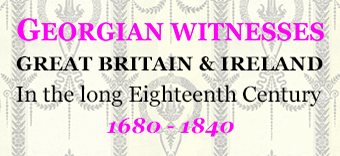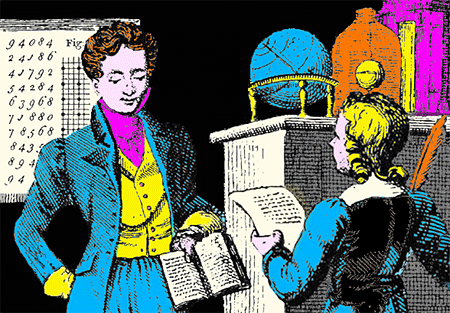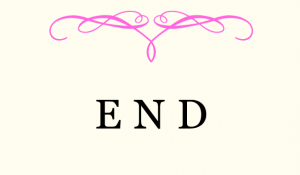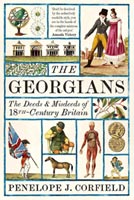Georgian Witnesses
7 / RENOWNED EDUCATIONAL RESOURCES AND GREAT GEORGIAN LIBRARIES
THREE KEY GEORGIAN EDUCATIONAL RESOURCES
7.1 A CLASSIC DICTIONARY
Dr Samuel Johnson’s A Dictionary of the English Language (1755), 2 vols, was not the first of this type of publication (the earliest being a Latin-English Wordbook published in 1538) but it became a standard work for over one hundred years, being buttressed by Johnson’s cultural authority, his full explanations of word derivations, his provision of relevant quotations to illustrate usage, and his accounts of both the history and grammar of the English language.
7.2 A CLASSIC MATHEMATICAL TEXTBOOK
At the very start of the long eighteenth century, a mathematical textbook became a standard school-book, holding unchallenged sway until well into the nineteenth century. Written by Edward Cocker (1631 – 76) and published posthumously in 1677 by John Hawkins, it was entitled: Cocker’s Arithmetick: Being a Plain and Familiar Method Suitable to the Meanest Capacity for the Full Understanding of That Incomparable Art, As It Is Now Taught by the Ablest School-Masters in City and Country. A companion volume, Decimal Arithmetick, followed in 1684. So great was the author’s authority that the catch-phrase ‘According to Cocker’ was used to indicate that something was absolutely correct and done according to the rules.
7.3 A CLASSIC HANDBOOK TO GAMES
Edmond Hoyle (1672 – 1769) turned his tutorial notes into a handbook in the form of A Short Treatise on the Game of Whist (1742), which rapidly became the standard authority, gaining the ‘tribute’ of many pirated editions. Hoyle also published treatises on backgammon, piquet and chess, all with great success, appearing in a collected edition from 1748 onwards. Today his name is still invoked to authenticate rulebooks, such as E. Silberstang (ed.), Silberstang’s Encyclopaedia of Games and Gambling: A Modern Hoyle for Sophisticated Gamers (New York, 1996).
NINE GEORGIAN LIBRARIES – THE SECULAR CHURCHES AND CATHEDRALS FOR THE NEW WORLD OF RISING LITERACY
There are many surviving eighteenth-century libraries, both large and small. This selection picks a range of examples, some institutional, some independent, especially those which retain historic premises, to show their diversity.
TWO IN IRELAND
7.4 Marsh’s Library, St Patrick’s Close, Dublin DO8 FK79. Constructed for Narcissus Marsh, Archbishop of Dublin, it was opened in 1705 and formalised by Act of Parliament in 1707. It is one of the last eighteenth-century public buildings in Ireland which is still used for its original purpose, and still retains its original interior fittings. It is much visited by both tourists and readers; and its catalogue can be consulted at www.marshlibrary.ie/
7.5 The Linen Hall Library, 17 Donegall Square North, Belfast BT1 5GB. Founded in 1788, it is the oldest library in Belfast and the last subscribing library in Ireland, meaning that it is privately organised and funded by membership fees or endowments. It originated as the library of the Belfast Reading Society, before gaining its official name as the Belfast Library and Society for Promoting Knowledge, and, after 1892, its unofficial one as the Linen Hall Library, when it moved into a grand Victorian former linen warehouse. See details at www.irelandsown.ie/the-linen-library-hall/
THREE IN SCOTLAND
7.6 The Leighton Library or Bibliotheca Leightoniana, The Cross, Dunblane FK15 OAQ. This institution is housed in Scotland’s oldest purpose-built library, constructed in 1687 for use by the local clergy; and expanded into one of Scotland’s first public subscription libraries (1734). In the early twentieth century, the entire building became dilapidated and the library fell into disuse; but, after extensive repairs and recataloguing, it was reopened in 1990 and is acknowledged as a Category A listed building. For information, see www.leightonlibrary.org.uk/
7.7 Innerpeffray Library, Innerpeffray, near Crieff, Perth & Kinross PH7 3RF. Founded in 1680, it was Scotland’s first free lending library, based on a donation of books from local landowner David Drummond. It was housed initially in an attic room in St Mary’s Chapel, then supplemented by extra rooms, until in 1739 a later landowner and cleric, Robert Hay-Drummond, decided to fund a purpose-built library, which opened in 1762. The collection includes a rare Borrowers’ Register, detailing all book loans between 1747 and 1968, when the library ceased lending. The building remains open to the public at specific times; and is lovingly tended by a registered charity which relies upon donations. For further details, see www.innerpeffraylibrary.co.uk/
7.8 The Sibbald Library of the Royal College of Physicians, Edinburgh, 9 Queen Street, Edinburgh EH2 1JQ. The College was founded by royal charter in 1681, and the library in 1682, with a donation of books from the physician and antiquary Sir Robert Sibbald, whose name was given to the library when it moved into its own premises in Edinburgh’s Old Infirmary, before it later moved to the College’s new headquarters in Queen Street in 1844. It contains important historical collections and archives, as well as some significant artefacts: for information, see www.rcpe.ac.uk/library-archives/sibbald-library-blog/sibbald-library
AND FOUR IN ENGLAND
7.9 The Library at All Souls College, High Street, Oxford IX1 4AL (formerly known as the Codrington Library). A superb edifice, designed by architect Nicholas Hawksmoor in 1716 and completed 1751, houses a collection bequeathed to All Souls by one of its Fellows, Christopher Codrington (1668 – 1710). The library, which has been in continuous use since its foundation, provides a notably harmonious space for its readers, under a lofty ceiling. The origins of the Codrington fortune, however, were not at all harmonious, being derived from West Indian sugar plantations, worked by enslaved Africans and their descendants.
In recognition of that sombre history, the College in 2020 changed the Library’s name and is taking constructive remedial steps, including educational investments in the West Indies. For details, see
www.asc.ox.ac.uk/the-library
7.10 The Old Library, 30 King Street, Bristol BS1 4DZ. It is a historic listed building, constructed in 1738 – 40, which housed the main collections of Bristol’s city library (founded 1613) until the library moved in 1906 to a new purpose-built home. At that time, many of the shelves and other Georgian fittings were also removed to the new venue, including a superb but little known wooden carved over-mantel (not on permanent display), which was purchased in 1721 from the studio of Grinling Gibbons (1648 – 1721) and given to the Old Library. The Old Library building is now home to the Cathay Rendezvous restaurant, which appreciates its elegant and historic premises. For its history, see en.wikipedia.org/wiki/
Old_Library,_Bristol
7.11 The Leeds Library, 18 Commercial Street, Leeds LS1 6AL. This library was founded in 1768, with its first secretary being the polymathic political scientist, pamphleteer and experimental chemist, Joseph Priestley (1733 – 1804). After two early moves, the organisation settled in 1808 into its purpose-built premises, a grade II listed Greek Revival building. Another early organisation in Leeds was the Foreign Library, founded 1778 and incorporated into the Leeds Library in 1814. The collection remains one of the oldest surviving subscription libraries in the UK but, upon suitable occasion, non-members are allowed to use
its resources. For details, see www.theleedslibrary.org.uk
7.12 The Morrab Library, Morrab Gardens, Penzance, Cornwall TR18 4DA. This library is an independent organisation, founded in 1818 and originally known as the Penzance Library, formed by a merger of two late eighteenth-century book clubs, one for ladies (1770) and one for gentlemen (post 1770). After several moves, the Library found its permanent home in Morrab House (built in 1841) which was purchased, with its gardens, by Penzance Corporation in 1889 and subsequently used for community purposes. For more information, see www.morrablibrary.org.uk
7.13 ADDITIONAL NOTE: THE MOST EXCEPTIONAL LIBRARY IN WALES, DATING FROM THE LATER NINETEENTH CENTURY, ALLOWS RESIDENTIAL GUESTS TO STAY AND SLEEP AMONGST ITS BOOKS.
The Hawarden Library, at Hawarden, Flintshire, was founded in 1894 by W.E. Gladstone to house his personal book collection and to make it available to ‘readers who have no books’: For details, see www.gladstoneslibrary.org




